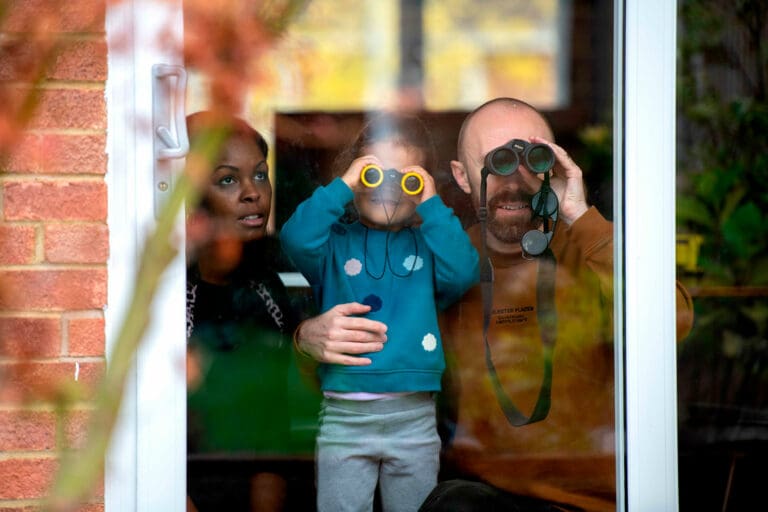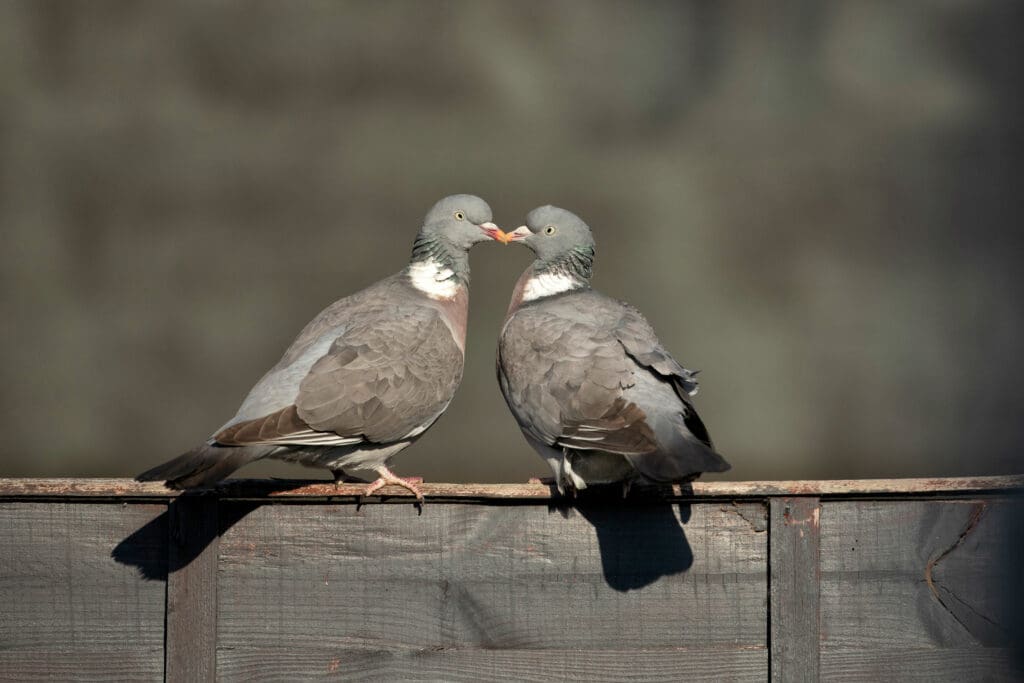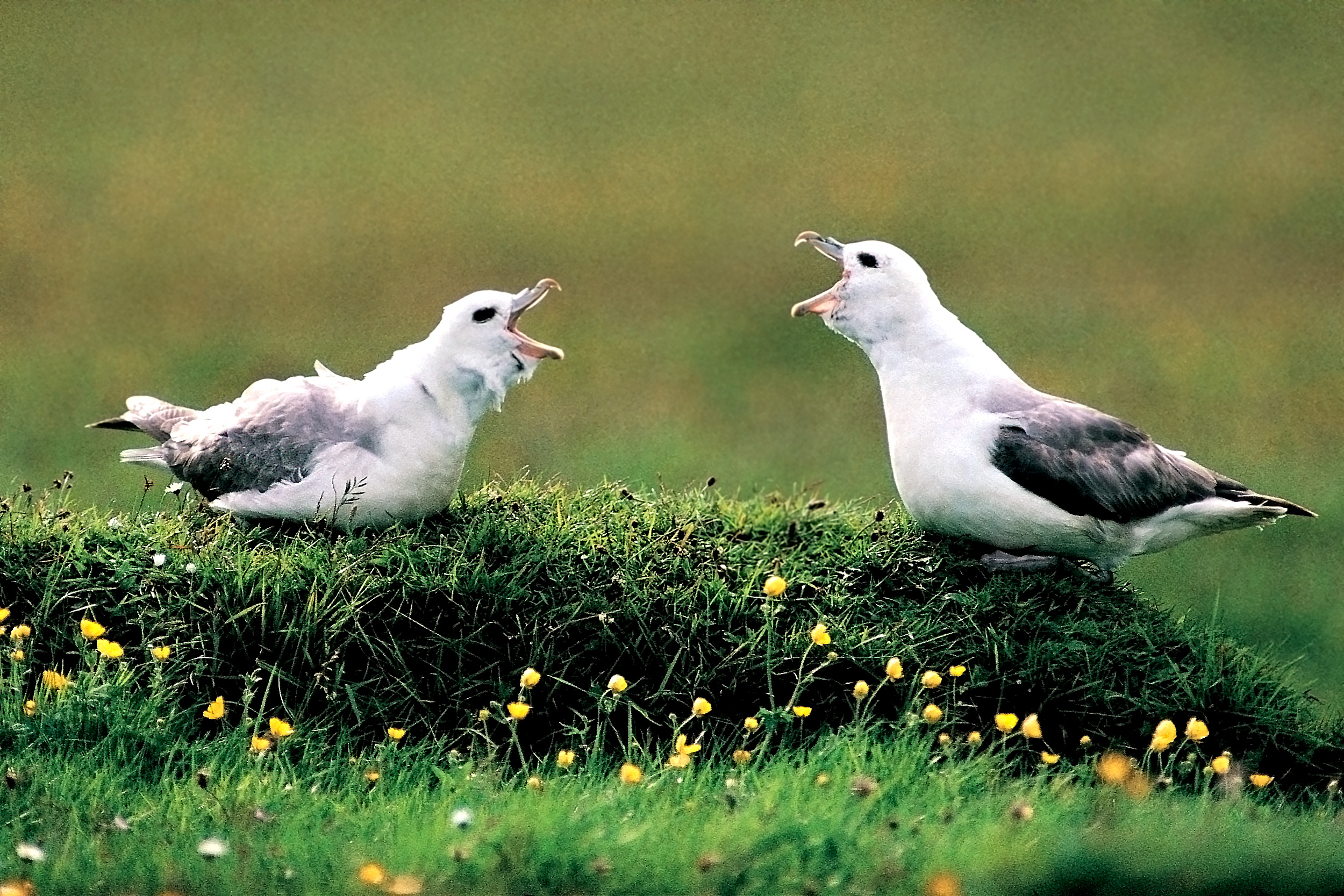Earlier this year I was lucky enough to visit Shetland. Our northernmost isles were rugged and spectacular, wild and beautiful. It can be an unforgiving environment but I’m pleased that the RSPB team that calls them home was doing incredible work to save the islands’ wildlife, restore peatlands and, most importantly, were firmly part of a thriving local community with nature at its heart.
During my time on the island of Fetlar, I went for an after-work dip in the sea. Whilst floating in the late afternoon sun staring at the sky, I had one of those amazing moments that nature sometimes gifts us. From seemingly out of nowhere, their shrieking calls announcing their arrival, I was surrounded by feeding Arctic Terns, dipping and diving into the water around me. After only a minute or so, their departure was just as sudden and the silence they left behind seemed deeper. Later that evening as I recounted my experience, I realised that the Shetland water had been cold but, surprisingly and perhaps worryingly, not teeth-chatteringly so.
‘All of this, climate change, the loss of nature, can feel so utterly overwhelming. But we absolutely know how to turn things around’
I am writing this in early September, and we’ve just experienced what I assume will be the last hurrah of summer – a week of unseasonably high temperatures of up to 30°C in the south of England. Alongside a summer of global climatic catastrophes, such as the Libyan floods and European forest fires, it seemed perhaps like we had got off lightly, but the significance of these unusual weather events cannot be overstated.
The science is patently clear. Our world is warming and we, humanity, are to blame.
The results are complex and sometimes counter-intuitive, but the data doesn’t lie.
The latest State of Nature report released in September showed that climate change is one of the biggest drivers of the loss of nature across the UK. Climate change has caused major changes to nature on land and at sea, including range shifts, population changes and disruption to food webs. And not all species will fare equally. While warmth-adapted species such as egrets and Bee-eaters are likely to continue to expand their numbers across the UK, montane species, such as the Dotterel and the Ptarmigan, on the edge of their ranges in the UK, will be squeezed out.
And for many of our native species, nesting will become increasingly mismatched with peaks in the insect food sources essential for their chicks.
It’s only by the extensive monitoring and recording that has gone on for more than 50 years that we can be sure of what the data is telling us. We are in debt to the army of volunteers, enthusiasts, professionals and semi-professionals who have all added to our knowledge of the UK’s wildlife.
You – our members and supporters – continue to play your part, too. Thanks to you, the Big Garden Birdwatch has been a stalwart of the citizen science scene for more than four decades. It returns for its 45th year in late January and is another example of how important the long-term monitoring of our wildlife is, showing us changes in the make-up of our garden birds over time.
All of this, climate change, the loss of nature, can feel so utterly overwhelming when viewed in its entirety. But the heartening thing is we absolutely know how to turn things around.
The State of Nature report not only showed the full extent of the loss, it also pointed to a way forward. A way in which we can help nature return. It provided clear, actionable solutions.
But they need to happen with urgency and at far greater scale. That’s all it takes for us to breathe clean air, swim in clean rivers, and enjoy green spaces with abundant and thriving wildlife.
Our politicians need to act now, in response to this seminal report, before it is too late.
Listen to this feature here:

Together, let’s make it count
The 45th Big Garden Birdwatch took place between 26–28 January 2024. You can submit your results here (before 18 February 2024) and also see some of the preliminary results, based on data that participants have uploaded so far.

Joining in with the Big Garden Birdwatch. Photo: Ben Andrew (rspb-images.com)
You might also like



